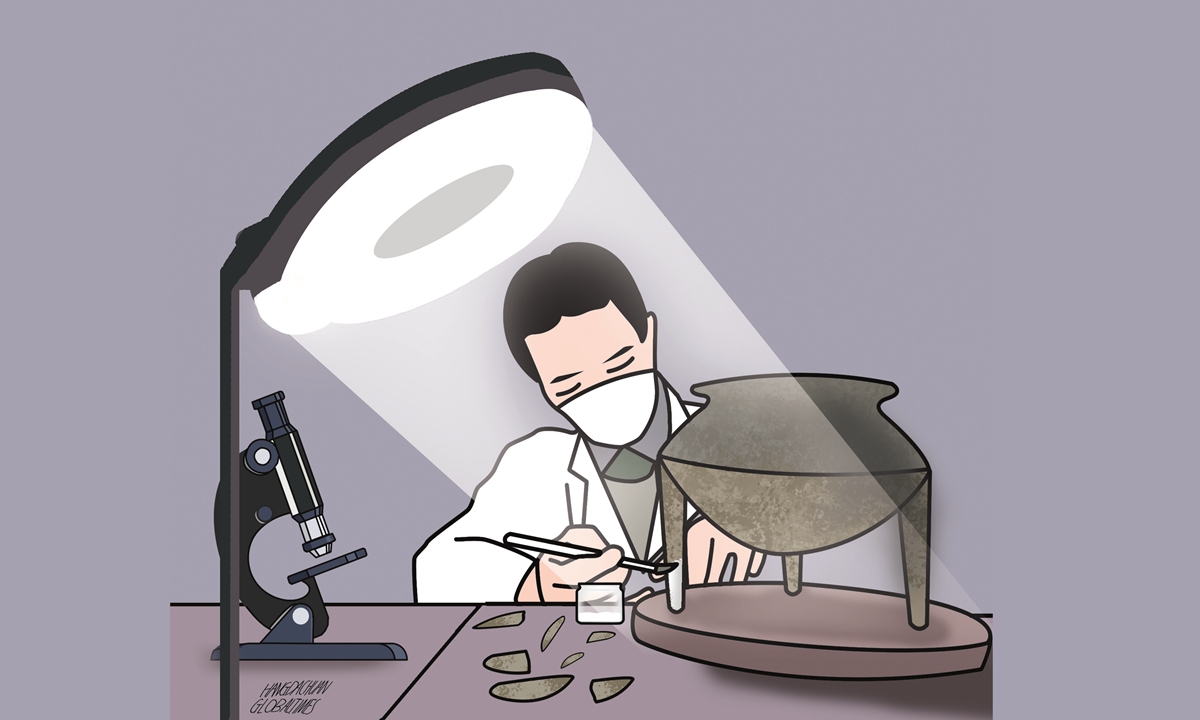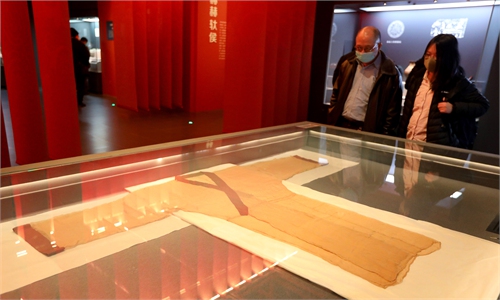ARTS / CULTURE & LEISURE
Relic doctors: heroes helping humanity learn about ourselves

Illustration: Hang Dachuan/Global Times
Of all the professions out there, "relic doctors" may be rarely talked about, but they are the heroes that help a nation to understand their ancestors and themselves.
On Saturday and Sunday, a professional relic restoration competition will be held in Taiyuan, North China's Shanxi Province, which is rich in historical sites and cultural relics. More than 200 personnel from 27 provinces and cities are going to compete and demonstrate their skills at repairing historical relics and archaeological excavations together with theoretical knowledge.
This will be the third such activity following contests in 2018 and 2021. This activity is a good opportunity for professional restorers to show their relic restoration techniques and promote their "spirit of craftsmanship."
The profession entered the spotlight through the TV documentary series Masters in Forbidden City. Of all the 1.86 million historical relics housed deep inside the ancient imperial palace, piece after piece was returned to their original beauty thanks to the hard work of restorers, including Buddhist statues, ancient clocks, and the famous Chinese painting Along the River During the Qingming Festival by Song Dynasty (960-1279) artist Zhang Zeduan.
Many Chinese viewers were shocked to learn that "such a profession exists on Earth," but they were even more amazed by the artisans' devotion, tenacity and excellent skills - the core spirit of craftsmanship.
Of course, restoring relics is no easy job. It requires a lot of patience, meticulous work and a strong sense of responsibility as one small error can end up with damages to an ancient artwork. Moreover, restorers must be well-rounded professionals possessing knowledge of history, art, literature as well as chemistry, physics and some advanced technology. They should also be very familiar with different materials, such as bronzes, ceramics, lacquer, paper, silk and metal.
Starting in 1954, the Palace Museum began cultivating young personnel in this profession.
Over the past decades, a great number of talented professionals in arts and crafts and graduates from top universities were dispatched to support this work. Now a relatively complete work force of traditional artisans has been formed at the museum.
The documentary also showed that some newcomers who were not quite accustomed to the time and effort required by the job still decided to stay at their posts without hesitation.
Some audiences commented that these restorers, both men and women, looked very optimistic as they toiled away in such a "quiet" working environment.
Over the past few decades, China has attached great importance to the protection of its cultural relics and called for "bringing hidden relics back to life."
To fulfill this mission, the work of restorers is very essential because they are the heroes of historical relic conservation. China has also paid great attention to vocational training in the field.
According to the organizer, this competition will be broadcast live on TV and also on social media so as to fully display the restorers' incredible skills.
It is expected that it will provide more artisans with a good chance to demonstrate their skills and stand out as experts, while raising the awareness of the general public about the importance of the profession and increase its social status.
It is hoped that this competition will attract more young people to take up this profession so that there will be more successors to preserve the ancient treasures of humanity.


